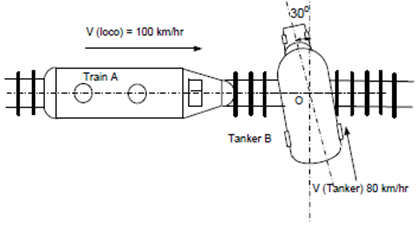Reference no: EM13848696
Question 1:
A carriage of mass M is at rest on a smooth rigid floor as shown in figure Q1. A point mass m is attached to a slender rigid of length L with negligible mass is pivoted to the carriage at point A through a frictionless pin. The Point & rod release from the rest in horizontal position at time t = 0. At time t = 0. At time t = T seconds the rod is at vertical position as shown in dotted lines in figure q1. M = 5 ma and ma = 10 kg and L = 1.5 m.
i. Determine the absolute velocity of the carriage and the point mass B when the rod is at vertical position.
ii. Determine the distance travel by carriage during time T seconds.
iii. What is the angular velocity of the mass B at time T seconds .
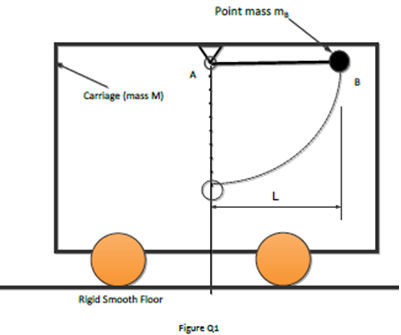
Question 2:
At the instant shown in the Figure, link AB has an angular velocity ωhk = 3 rad/s. angular acceleration αhk = 2 rad/s2. Each link is considered as a uniform slender bar each with a mass of 2.0 kg/m.
I. Determine the angular velocity and angular acceleration of link BC and CD.
II. Determine the kinetic energy of each link (AB, BC one CD)
III. Determine the horizontal and vertical component of acceleration at point C.
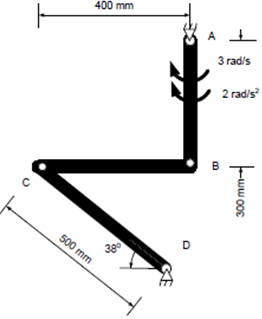
Question 3:
Figure Q3 show a 10 mg front-end-loader used to move Ore in the loader bucket. The centre of mass (CM) for the front-end-loader and the Ore load at G and Gt, respectively.
I. Determine the reaction exerted by the ground on the pairs of wheel: at A and B. if the front-end-loader is moving forward in a inclined surface (17th to horizontal) at a constant acceleration of 0.5 m/s2 from the rest. The Ore Load is 2.5Mg and the CM (Gt) is at height h = 3.5 m and x = 2.0 m (from the centre of front wheel A)
II. What is the maximum acceleration can develop by the front end loader to move forward on inclined plane without tipping over.
III. Investigate the motion of the front end loader case (i) it the inclination of the surface become 26° to the horizontal and the surface condition with loose soil i.e. static friction between the Wheels and the ground is 0.43.
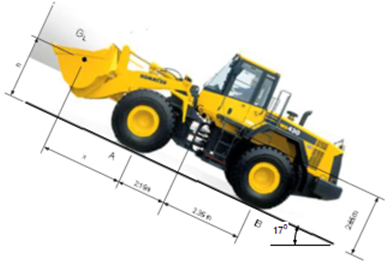
Question 4:
A slender uniform bar AB shown in Figure Q has a mass of 5 kg and length L = 2.5m and at rest in vertical plane. A thin 1.5 kg circular disk of radius LCD mm is deed to the Par AB through a smooth pin at it centre B. Two springs support the rod at A and C. AC = 0.8L. The rod is pivoted to ground using a frictionless pin at point E and it oscillates about it equilibrium position. k1 = k2 = 1600 N/m. A dashpots which have a damping coefficient 600 N s/m is attached to the rod AB at D. AD = 0.3 L as shown in Figure Q.
i) Write the equation of motion for small oscillations of the rod & disk attachment about its equilibrium position
ii) Determine the damp-free natural frequency of vibration of the bar & attached disk arrangement.
iii) Calculate damping coefficient t; (damping factor) and comment on the damping condition.
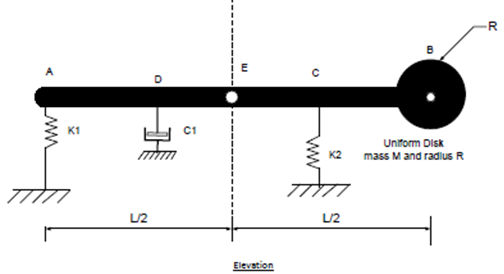
Question 5:
Figure shows a collision or a high speed locomotive engine and an empty oil tanker at an unprotected railway crossing. The locomotive A has mass MA and was travelling in constant velocity of 100 km/hr and the Tanker B has mass Me and was traveling in constant velocity of 80 km/hr. M. = 4.3 Mg and Ms =1.3 Mg
I. Calculate velocities of the locomotive and the tanker after the collision it the locomotive and the tanker become entangled and move off together alter the collision (no-derailment happened).
II. Calculate velocities of the locomotive and the tanker after the collision in terms of o (O< e < 1) which the coefficient of restitution between the locomotive and the tanker.
III. Calculate the possible energy loss for Case (1) and Case (I1) for value of e = 0.8. Comment on the severity of coition depending on your calculated value.
III. In the Case ii with e=0.8, estimate the angular velocity of the tanker if the tinker has started rotating (approx) about point 0 just after it moving away from the locomotive. Take the radius of gyration k of the empty tanker (about point O) = 2.48 m
List all assumptions clearly for each case.
